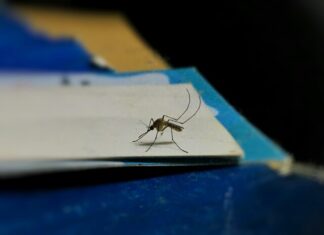Andrew Mathieson
STARING death in the face while riding high on life has become rather blase for 42-year-old big-wave surfer Ross Clarke-Jones.
At least three times – off Hawaii, Indonesia and most recently, Tasmania – the deep blue sea has nearly swallowed up surfing’s modern-day adventurer.
Even riding 50-foot (15-metre) waves that rise up like skyscrapers has failed to strike fear into him.
Facing career-ending injury is an entirely different matter though: it’s bigger than life or death.
A debilitating back problem little over a year ago hampered Ross paddling in the surf for months.
A chipped piece of bone had penetrated into the nerve root to leave his left arm weak.
Facing surgery the next day, Ross was determined there was one more big wave out there for the cameras to shoot the final parts of his latest surfing documentary.
“I was going to lose my arm (without the surgery),” he stubbornly admits.
“It was my last surf; I knew it was going to be like that.
“It could have been my last surf forever.”
The Jan Juc local did get whacked again – and hard, too.
That last wave he caught south of Tasmania was probably one of the scariest. It was a six-hour boat ride back to anywhere.
“We were kinda off the radar out there,” Ross says.
“There was no doctor on board … but we did take a lifeguard with us.
“He caught a better wave than me.”
Yet no mention of the best swells can pass without reminiscing on more than a decade that set the bar for future big wave surfers.
At a whopping 90-feet (27 metres) high, the waves at Log Cabins off the Hawaiian coastline were twice the size of most.
“It was more than just fear – we were more in awe of it,” Ross sighs, “it was like seeing Godzilla.
“You are in disbelief, it was completely surreal – I still haven’t seen anything like it.”
Memories for Ross and his resident tow-in partner Tony Ray should be hazy but they are not.
The memories are more haunting than most ghost stories.
“We lost our ski and we almost lost each other,” Ross moans. The big hit paralysed them amid monstrous waves with no end in sight.
Tony’s power ski could not beat the wave either.
They drifted for three kilometres over the next three hours – but survived to surf again.
“I competed there the next year but I was a bit scratchy,” Ross says, “I had to get back on the horse.”
The Hawaiian swells, the scene of his first pro event in 1986, still hold a special place in Ross’s heart. He spends a great chunk of his year there.
Despite never reaching any great heights on the world tour, it was the site he quickly gained a reputation among the bigger waves.
“I was instantly labelled as a big-wave surfer,” Ross grins.
“I was comfortable with that too, but I remember I was also riding two-feet (60 centimetre) waves.”
Growing up at Terrigal’s beaches on the Central Coast, he learned about surfing and, as a cheeky 12-year-old, always thought, “the waves never seemed big enough”.
(Dad took young Ross down for a surf before school every day.)
“In the local area, that’s just what you did,” he says.
Surfing has become more about adventure than sport and companies now pay him to ride the wildest waves.
That sometimes means dipping into the shark-infested waters in the Cape of Good Hope, armed with nothing but a board.
Ross says the big white pointers are known to “jump out of the water” within hundreds of metres of the South African surf.
Waiting for a tidal wave to hit the Amazon River among the Brazilian rainforest is different again.
“The wave goes for like 30 miles,” Ross laughs, “it moves quite fast like a freight train.
“All the animals go crazy and birds fly off.”
Organisers told Ross the break would arrive at 11.05am on the dot – and it did.
With just one wave a day, falling off is not an option.
“The Brazilians have been going there for a while and trying to set the world record for the longest wave ever ridden,” Ross states.
“One guy went for 33 minutes – I lasted 12 and I was stuffed.”
Get the latest news to your email inbox FREE!
REGISTER





